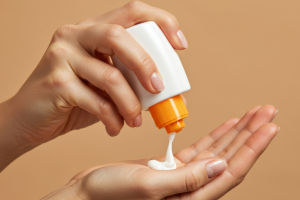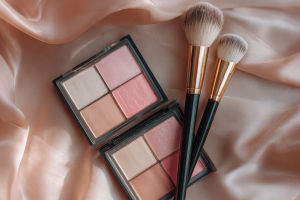We all know that a flawless base is the foundation of a great makeup look. Without a smooth, even canvas, no matter how beautiful the eyeshadow or lip color, the final result might not shine as brightly.
Whether we're heading out for a special event or just want to feel put together for the day, achieving a perfect base can make us feel confident and ready to face the world.
But how do we achieve that smooth, glowing finish that we often see in makeup tutorials and ads? It starts with understanding the essentials of a good foundation.
In this article, we'll guide you through the steps to achieve a flawless base with expert tips that will help you choose the right products and apply them like a pro. Let's dive into the process!
Start with Skincare: Prepping is Key
Before we even think about foundation, we need to focus on prepping our skin. A well-prepped face ensures that foundation goes on smoothly and lasts longer. It's like creating the perfect foundation for your makeup, quite literally!
We recommend starting with a gentle cleanser to remove any dirt or oils from the surface of your skin. This helps foundation adhere better. After cleansing, apply a moisturizer suited for your skin type to keep your skin hydrated. This step is especially important if you have dry skin, as a well-moisturized base prevents foundation from settling into fine lines or clinging to dry patches.
Next, don't skip the primer! A good primer can help control oil, minimize pores, or add a radiant glow—depending on your skin's needs. For oily skin, a mattifying primer is ideal, while a hydrating primer will work wonders for dry skin. A primer creates a smooth surface, ensuring your foundation looks flawless and stays in place all day.
Choosing the Right Foundation
When it comes to foundation, one size doesn't fit all. Choosing the right foundation depends on several factors, including your skin type, coverage preference, and undertone. It's important to pick a foundation that complements your skin, not just one that matches your color.
For those with oily skin, oil-free foundations or mattifying formulas are your best bet. These foundations are designed to control shine and give you a smooth, matte finish. If you have dry skin, look for foundations with hydrating properties, such as those with hyaluronic acid, that will help lock in moisture and give your skin a healthy glow.
In terms of coverage, you'll need to decide whether you want light, medium, or full coverage. For an everyday look, a light to medium coverage foundation is often enough to even out the skin. Full-coverage foundations are great for special occasions or if you need to cover blemishes, redness, or uneven skin tone. It's all about finding the balance between coverage and comfort.
Perfecting the Application: Tools Matter
Now that we've chosen the right foundation, the next step is applying it correctly. The tools you use to apply your foundation can make a huge difference in the final result. Brushes, sponges, and even fingers can all achieve different finishes, so choosing the right tool is key.
A foundation brush can provide a full, even coverage and is especially good for liquid or cream foundations. Use a stippling motion for a more airbrushed look. If you prefer a more natural finish, a damp beauty sponge is a great option—it helps blend the foundation seamlessly into the skin, leaving a soft, dewy finish.
For those of us who want a quick and easy application, using fingers can work just fine. Just make sure to warm the product in your hands first and blend evenly. However, a beauty sponge will always give you that airbrushed, flawless finish, making it the tool of choice for many makeup artists.
Setting the Base: Locking It In
To ensure your foundation lasts all day, setting it is crucial. Setting your foundation not only helps it stay in place but also prevents it from settling into fine lines or moving throughout the day.
If you have oily skin, a translucent setting powder is your best friend. It helps absorb excess oil and gives you that smooth, matte finish. Apply the powder gently with a fluffy brush to avoid a cakey look, focusing on areas like the T-zone where oil tends to build up.
For dry skin, you can skip powder and go straight to a setting spray, which helps lock in moisture while keeping your makeup in place. Setting sprays can also add a dewy finish if that's the look you're going for. It's all about finding what works best for your skin type.
Bonus Tips: Extra Touches for a Flawless Finish
To truly take your base to the next level, there are a few extra touches that can make all the difference. Contouring, highlighting, and blurring are all techniques that can enhance your foundation, giving your skin more dimension and radiance.
For a natural glow, a cream or liquid highlighter can be applied to the high points of the face, such as the cheekbones, brow bones, and down the nose. If you want to sculpt your face, a cream contour can add depth and definition, especially around the cheekbones and jawline. Just remember, blend, blend, blend!
Conclusion: Confidence Starts with a Flawless Base
Achieving a flawless base doesn't have to be difficult. With the right products, tools, and techniques, we can all create a smooth, even canvas that makes our makeup look stunning and stays put throughout the day. The key is knowing your skin type, choosing the right foundation, and using the best application techniques for your desired finish.
Remember, a flawless base is not just about the products—it's about taking care of your skin too. So, invest in a good skincare routine, prep your skin well, and then let the makeup do its magic.
What foundation techniques work best for you? Do you have any tips or favorite products that help you achieve a flawless base? We'd love to hear your thoughts—share them in the comments below!


